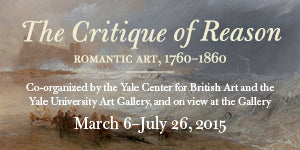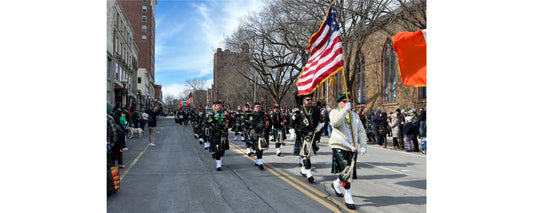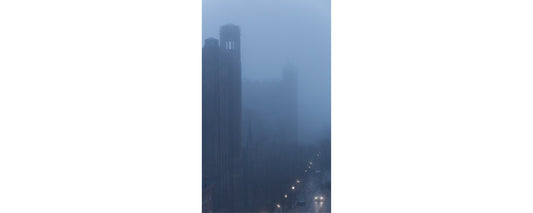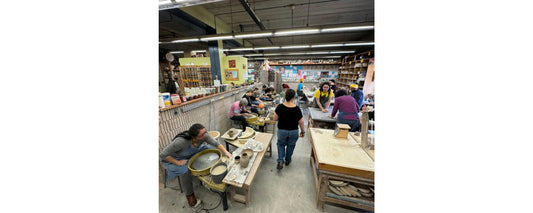Something’s nature is the sum of its most fundamental attributes, an encapsulation of the features without which a thing would cease to be that thing. Capital-“n” Nature is something similar, only its domain isn’t this thing or that, but all things.
Educational organization Connecticut Natural Science Illustrators honors both concepts, teaching students the art of depicting Nature’s animals, plants and environments while remaining utterly true to the natures of those animals, plants and environments. An a la carte curriculum using materials from graphite to paint serves both beginners and experts, with a persistent emphasis on the fundamentals of illustrating any real things—like perspective, contour, light and texture—to go with the peculiars of natural science illustration.
And peculiar it is. The idea is to represent the subject, as well as any environmental details surrounding it, in the most biologically accurate way possible. For the viewer, this results in illustration of a deeper sort—of both an idea and a set of hard facts, particularly good for publication in scientific/medical journals, textbooks and other educational outlets, including as backgrounds for natural history museum installations like the ones at the Peabody.
sponsored by
This means that, although the artist can enjoy high freedom to make some of the basic choices other visual artists do—how to frame the subject on the paper or canvas, for example, and where to place a light source—she has much narrower freedom when it comes to choosing the color of a particular flower’s petals, for example, or the proportions of a certain crab species’s legs and pincers. Naturally, abstraction is a major no-no.
With encouragement from the Yale Peabody Museum of Natural History, the group operates out of the Peabody’s Community Education Center, a bilevel labyrinth of lime green-accented halls and rooms at Yale’s West Campus in Orange. Nearby are the West Campus Urban Farm and surrounding trails, providing opportune field-sketching grounds for CTNSI students.
Animals, of course, aren’t typically of a mood to oblige sketchers, either by standing still or striking a pose. That’s where the connection with the Peabody comes in extra handy. Held by stands and glass cases dispersed across the second floor are taxidermied animals (with assurances given that most of the specimens were donated long ago, and none of them are the result of active killing efforts). There are small birds perched and mid-flight, a buck-toothed muskrat standing on hind legs, a raccoon peering curiously into the distance, a coyote howling, even a black bear showing casual teeth as if mid-yawn. A storage closet contains a multitude of larger birds, including an eagle with marbled brown feathers and hooked bill.
CTNSI students get the benefit of proximity to these extraordinary subjects, allowing for leisurely sketching sessions they couldn’t easily have otherwise. In a clear nod to the dinosaur-happy Peabody, a wall inside a very tall and long room features what might just be a life-size Brontosaurus. As big as the wall is, there’s room enough only for the neck on up, a placid face crowning a long grey cord of scaly sinew extending beneath a couple of air vents.
In another room, where sunlight streams in through large windows, CTNSI director and instructor Dorie Petrochko calls natural science illustration “more precise” and “more rigorous” while requiring a “more intense use of materials” than most fine arts work, making it “much more interesting” to her. Earnest, methodical and introspective, she seems well-suited to the demands of the form. She’d “always been an art student,” she says, but it was a certificate program at the New York Botanical Garden that “launched me into this world” of science illustration.
Instructor Linda Miller, also a trained fine artist, found her way to CTNSI through the Peabody, where, as a volunteer, she helped preparator Michael Anderson with his work on the museum’s 21-foot bronze torosaurus sculpture. She later volunteered in the Peabody’s “discovery room,” delighting in delighting young visitors with the room’s “rocks and the ant collection and frogs and so forth.”
Both Petrochko and Miller are driven by what Miller sums up as a “love of Nature.” Closing her eyes, channeling what she calls the “spiritual connection of being outdoors,” Petrochko says that “being immersed in everything that [Nature] has to give” draws her in to the endeavor. “You’ve got to soak it up. Every minute. All of us need that kind of stimulation… being in a place you like, observing whatever you like to observe.”
Miller agrees, then adds conscientious notes of urgency and unease that have been growing for decades regarding the environment. Eliciting affirmative nods from Petrochko, she worries about climate change and other irreversible effects of human behavior on Nature, and about whether there’s enough will among the people to be able to do anything about it.
But she still holds out hope, and aims to do her part. “As an artist,” giving students a “sense of wonder” about the natural world is “what I can do to help the environment,” Miller says. “The beauty [of Nature] is not something we should take for granted. This is a gift.”
Connecticut Natural Science Illustrators
at the Yale Peabody Museum Community Education Center
230 West Campus Dr, Orange (map)
(203) 934-0878 | ctnsi.info@gmail.com
Website | Class Offerings
Written and photographed by Dan Mims.








